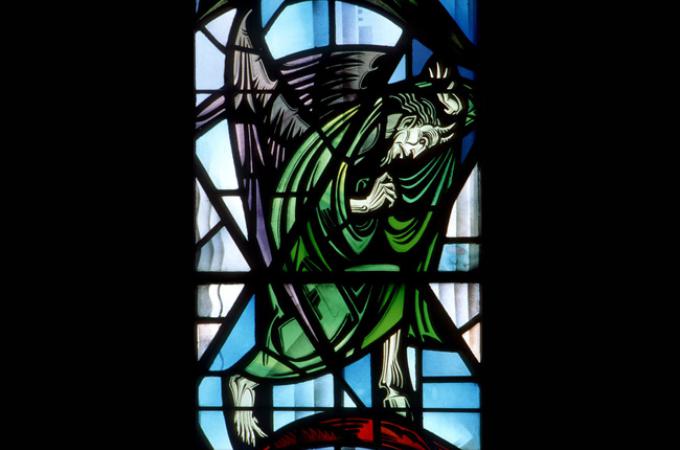Pray for Satan?
Q. Jesus tells us to love our enemies. Satan is our enemy. Should we love Satan, perhaps by praying for his redemption? Is it possible that, through our prayers, Satan could repent and be reunited with God? (Woodbridge, Virginia)
A. There is no reason to believe that Satan would ever change his ways, and I believe it would be a waste of time to pray that he will. The Gospel of Matthew speaks of "the eternal fire prepared for the devil and his angels" (25:41).
The Catechism of the Catholic Church expands on this: "It is the irrevocable character of their choice, and not a defect in the infinite divine mercy, that makes the angels' sin unforgivable" (No. 393).
That same section of the catechism goes on to quote St. John Damascene: "There is no repentance for the angels after their fall, just as there is no repentance for men after death."
So, it seems to me that our time should be spent praying not for the salvation of Satan but of living human beings. No matter how sinful or how far from God someone may seem, every person still on this earth can be brought into God's eternal family through repentance for sin.
Q. As I have reached old age (82), my thoughts have been on Jesus and the apostles being poor and humble. By contrast, I see priests, bishops, and cardinals attired at Mass with gold-emblazoned apparel and celebrating the consecration using chalices of gold.
Yet the statuary of Christ and the saints depicts them as people of poverty. Why this obvious imbalance in celebrating our faith? (Derby, Indiana)
A. I agree in substance with your observation. It's probable that Jesus at the Last Supper used a humble clay cup in blessing the wine, and I don't think we should stray far from that simplicity.
At the same time, though, the Church does want to highlight the "specialness" of the Eucharist. What we receive in holy Communion is the greatest gift of all, and sacred vessels denote the preciousness of the contents in a way that common and profane containers do not. The sacrifice of the Mass brings us into contact with the divine and "lifts us up" to heaven.
And so, the guidance the Church offers us on this is contained in the General Instruction of the Roman Missal, which is the Church's "rule book" on liturgical matters.
There we read, "Sacred vessels should be made from precious metal. If they are made from metal that rusts or from a metal less precious than gold, they should generally be gilded on the inside.
"In the dioceses of the United States of America, sacred vessels may also be made from other solid materials which in the common estimation in each region are considered precious or noble, for example, ebony or other harder woods, provided that such materials are suitable for sacred use" (Nos. 328-329).
In a section on sacred furnishings, the general instruction says that "noble simplicity" should be the governing goal in matters liturgical (No. 325). As applied to vestments, this would mean that "it is fitting that the beauty and nobility of each vestment not be sought in an abundance of overlaid ornamentation, but rather in the material used and in the design" (No. 344).
I have noticed over the years a tendency toward greater simplicity in liturgical vestments, and that trend is consistent with the Church's goal.
- Father Kenneth Doyle is a columnist for Catholic News Service



















